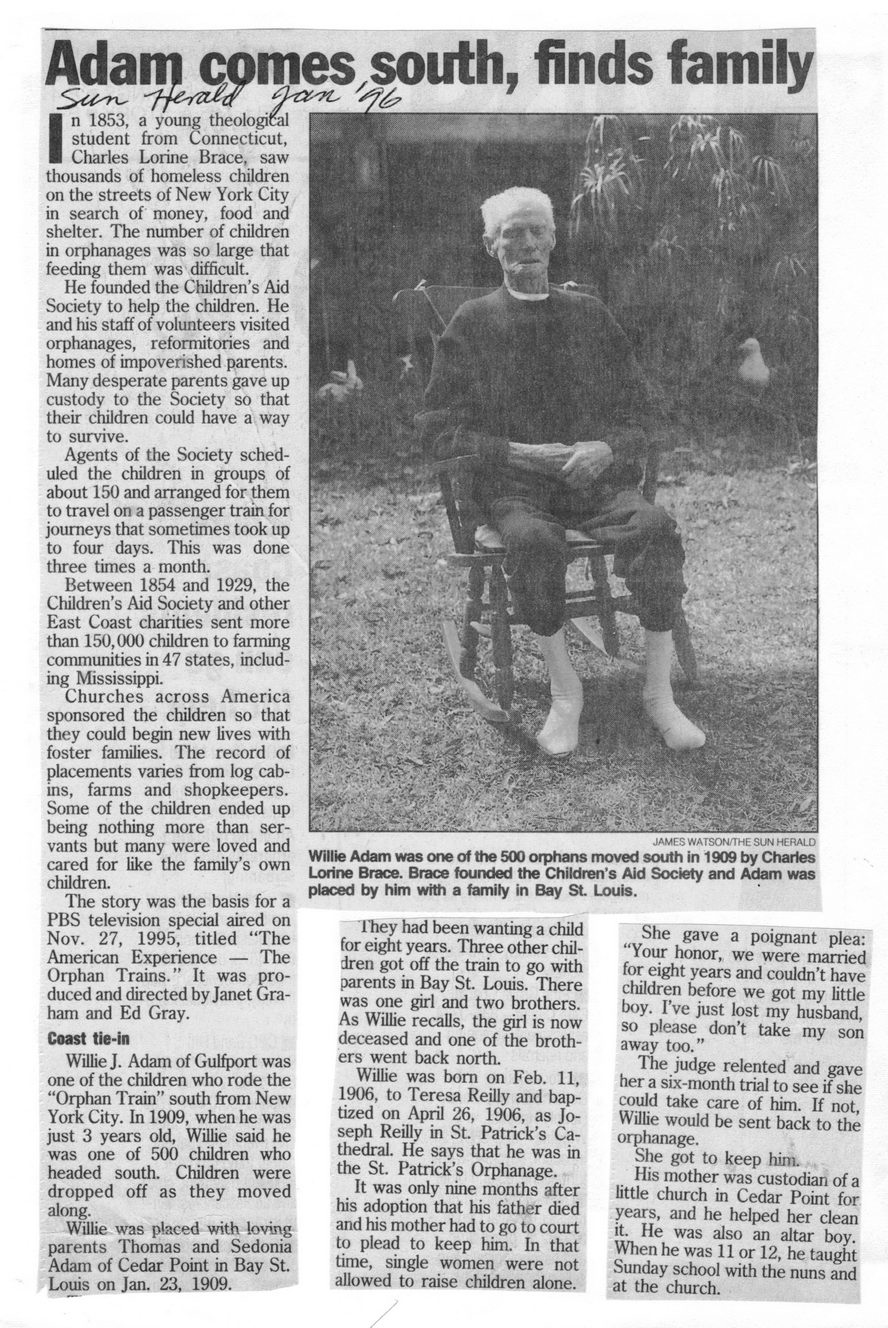This text was obtained via automated optical character recognition.
It has not been edited and may therefore contain several errors.
In 1853, a young theological AH student from Connecticut, Charles Lorine Brace, saw thousands of homeless children on the streets of New York City in search of money, food and shelter. The number of children in orphanages was so large that feeding them was difficult. He founded the Children’s Aid Society to help the children. He and his staff of volunteers visited orphanages, reformitories and homes of impoverished parents. Many desperate parents gave up custody to the Society so that their children could have a way to survive. Agents of the Society scheduled the children in groups of about 150 and arranged for them to travel on a passenger train for journeys that sometimes took up to four days. This was done three times a month. Between 1854 and 1929, the Children’s Aid Society and other East Coast charities sent more than 150,000 children to farming communities in 47 states, including Mississippi. Churches across America sponsored the children so that they could begin new lives with foster families. The record of placements varies from log cabins, farms and shopkeepers. Some of the children ended up being nothing more than servants but many were loved and cared for like the family’s own children. The story was the basis for a PBS television special aired on Nov. 27, 1995, titled “The American Experience — The Orphan Trains.” It was produced and directed by Janet Graham and Ed Gray. Coast tie-in Willie J. Adam of Gulfport was one of the children who rode the “Orphan Train” south from New York City. In 1909, when he was just 3 years old, Willie said he was one of 500 children who headed south. Children were dropped off as they moved along. Willie was placed with loving parents Thomas and Sedonia Adam of Cedar Point in Bay St. Louis on Jan. 23, 1909. JAMES WATSON/THE SUN HERALD Willie Adam was one of the 500 orphans moved south in 1909 by Charles Lorine Brace. Brace founded the Children’s Aid Society and Adam was placed by him with a family in Bay St. Louis. They had been wanting a child for eight years. Three other children got off the train to go with parents in Bay St. Louis. There was one girl and two brothers. As Willie recalls, the girl is now deceased and one of the brothers went back north. Willie was bom on Feb. 11, 1906, to Teresa Reilly and baptized on April 26, 1906, as Joseph Reilly in St. Patrick’s Cathedral. He says that he was in the St. Patrick’s Orphanage. It was only nine months after his adoption that his father died and his mother had to go to court to plead to keep him. In that time, single women were not allowed to raise children alone. She gave a poignant plea: “Your honor, we were married for eight years and couldn’t have children before we got my little boy. I’ve just lost my husband, so please don’t take my son away too.” The judge relented and gave her a six-month trial to see if she could take care of him. If not, Willie would be sent back to the orphanage. She got to keep him. His mother was custodian of a little church in Cedar Point for years, and he helped her clean it. He was also an altar boy. When he was 11 or 12, he taught Sunday school with the nuns and at the church.

Orphan Train Riders of BSL Document (012)